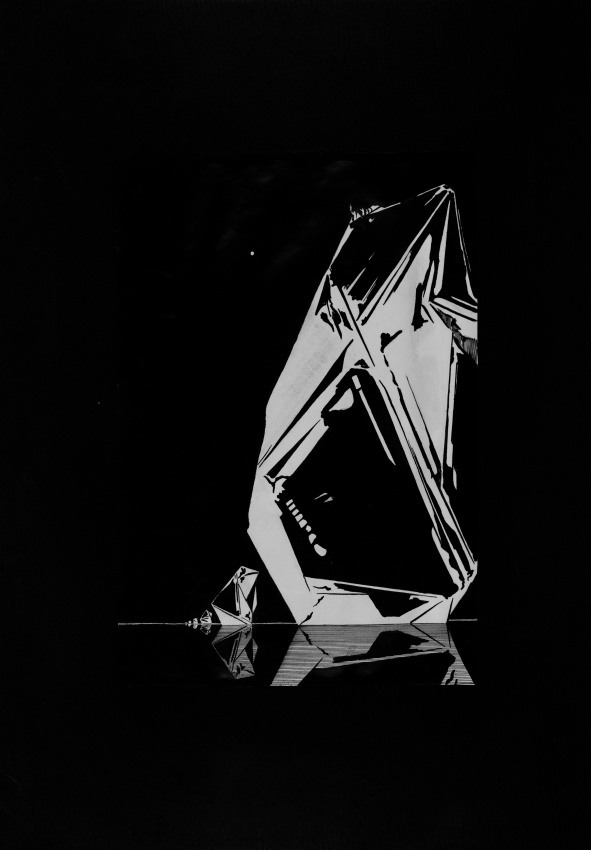A spectral sequence
No. 29, 1967 (Algebraic topology)
India ink on paper, 21.5x32 cm.
In this grand region of space, long arrays reach out toward infinity, each the product of many cells where, in one case, a lone being cries out against the cold light before it. In the deep distance, hovering above, a mysterious surface arcs in, defining the space and warping our view of the partitioned plane. In the field of algebraic topology, where physical spaces are manipulated symbolically, there is a technique known as the method of spectral sequences that is often used to compute the homology and cohomology, or structural likeness, of certain kinds of spaces. To do this, one breaks down that space into fiberings, a kind of unit, which are then computed algebraically in terms of an infinite sequence of arrays. In fact, each of these arrays becomes a term of the spectral sequence, and
together they become connected by certain types of differential operations.
In this picture, we see one such array, demonstrated under certain conditions. It is infinite and divided into cells, and each cell contains a certain group, most often an Abelian group. As such, we can actually understand this space not just in some vague and intuitive way, but in terms of a collection of algebraic facts that characterize the array. Strangely, by filling each cell of the array with specific information, and then processing that information by way of algebraic rules, we can obtain a much deeper comprehension of that space, of its structure.
